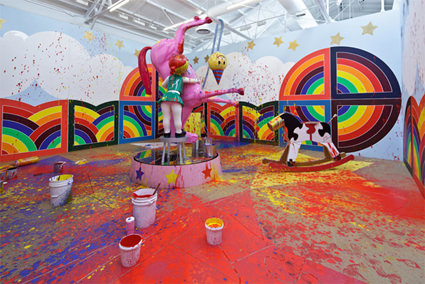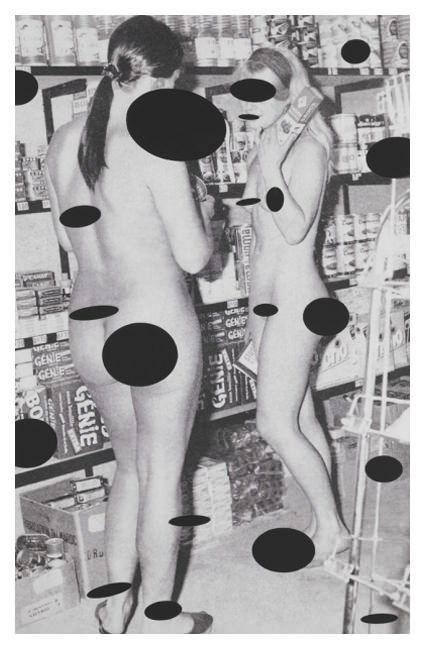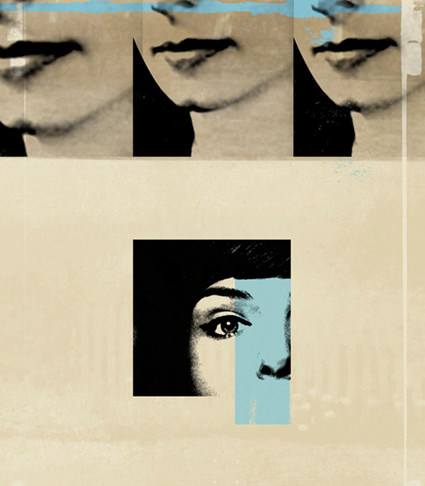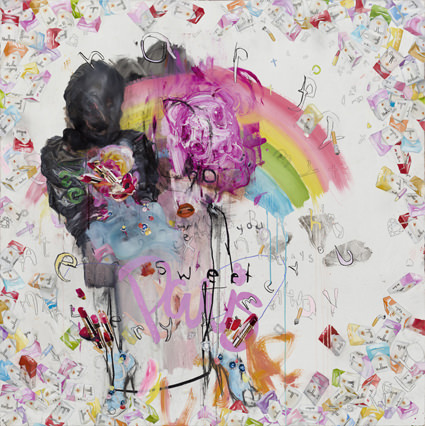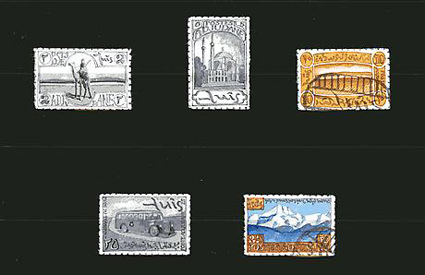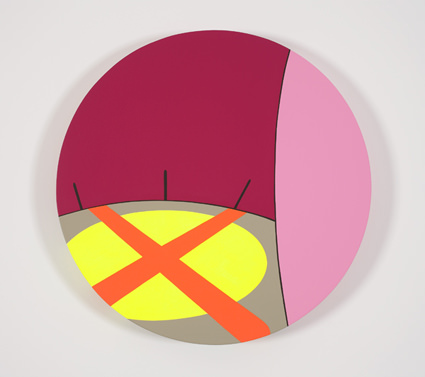RICHARD JACKSON – THE LITTLE GIRL’S ROOM
2011-09-19The Little Girl’s Room, an exhibition of new work by Richard Jackson. His first solo gallery exhibition in Los Angeles in 20 years, the show is a significant milestone for an artist whose work has continually expanded and redefined the physical and conceptual reach of painting since the 1970s.
The work’s centerpiece is a monumentally-scaled sculpture of a unicorn balanced on its horn, embraced by a life-size sculpture of a strangely doll-like little girl, that spins atop a motorized platform. Like many of the objects that Jackson has developed over the course of his career, the piece will be activated at the time of its installation in the gallery space. As it spins, paint will be pumped through the horse’s genitals and spray and drip across the other elements of the installation. These include the large-scale canvases that depict fluffy clouds and geometric forms borrowed from Frank Stella, as well as an array of other objects that feel at once familiar and disturbingly out of place in the context of a child’s room.
The sculptural figures that serve as both sources and supports for paint represent extremes of physicality in which the infantile and the archaic resemble each other. A larger-than-life Jack-in-the-box will be draped over one of the gallery’s trusses, and when activated will emit paint downward from the pointy tip of its hat; a hobby horse, its head lodged in a bucket of paint, will rock back and forth, dumping the bucket’s contents onto the floor around it; a sculpture of a baby will sit with a collection of baby bottles, filled and overfilled with paint; and, half-hidden in a closet, a comically aroused clown will communicate an aura of unsuccessfully repressed sexuality.
Exhibition runs through to October 20th, 2011
David Kordansky Gallery
3143 S. La Cienega Blvd
Unit A
Los Angeles
CA 9001611
